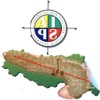Is the Radiological Diagnosis Predictive of the Pathological Findings in Pancreatic Cystic Tumors?
Abstract
Context Decision’s algorithms proposed in recent guidelines for pancreatic cystic tumors assumed a correct radiological diagnosis. Objective To evaluate the degree of discordance between radiological (RD) and pathological diagnosis (PD) in operated pancreatic cystic tumors. Methods From January 1990 to January 2013, 117 patients were operated for pancreatic cystic tumors. After 2000 all patients were observed by a dedicated team including radiologist, surgeons, gastroenterologist and pathologist. Demographics, clinical, radiological, surgical and pathological data were considered. RD was related to PD and factors influencing radiological pitfalls were studied with multivariate analysis. Results Twenty-one patients (17.9%) had RD of serous cystic tumors (SCT), 37 (31.6%) of IPMN, 11 (9.4%) of mucinous cystic tumors (MCT) and 48 (41.1%) non specified cystic lesion (NCL). PD were 29 (24.8%) SCT, 39 (33.3%) IPMN, 37 (31.6%) MCT, and 12 rare or non neoplastic lesions (10.3%). The degree of correlation between RD and DP was higher (P<0.001). The DP was correct in 95.5% of SCT, in 89.2% of IPMN, in 72.7% of MCT but only in 22.9% of NCL there were a rare lesions. Overall degree of radiological and pathological concordance was 54.7%. Multivariate analysis showed that RD after 2000 increase the odds of concordance between RD and DP (OR=3; P=0.010). Septa represent an independent factor who reduced the odds of concordance (OR=0.4; P=0.05). Age, sex, symptoms, size, site and number of lesions, solid component, calcification, dilated Wirsung, completed radiological work-up (CT scan plus MRI or EUS) did not influence concordance between RD and DP. Conclusion Risk of radiological pitfalls in pancreatic cystic tumors was high. The dedicated team could be reduce mistakes in preoperative diagnosis.
Downloads
Copyright (c) 2014 Claudio Ricci, Giovanni Taffurelli, Carlo Alberto Pacilio, Salvatore Buscemi, Marielda D'Ambra, Lucia Calculli, Donatella Santini, Raffaele Pezzilli, Riccardo Casadei, Francesco Minni

This work is licensed under a Creative Commons Attribution 4.0 International License.
As a member of Publisher International Linking Association, PILA, iMedPub Group’s JOP follows the Creative Commons Attribution License and Scholars Open Access publishing policies. Journal of the Pancreas is the Council Contributor Member of Council of Science Editors (CSE) and following the CSE slogan Education, Ethics, and Evidence for Editors.
